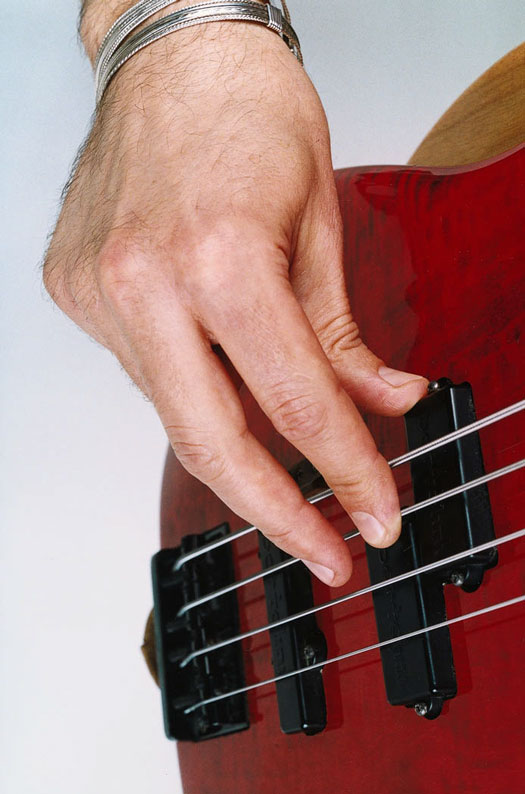Being a musician is not easy, takes perseverance and constant practice to master all kinds of techniques in music. In the musical, one of the tools that are complicated enough bass. Although it looks easy, it is quite difficult to master bass. Bass is an important instrument in a band. Together with drums, bass beat is the creator, the creator of the space, and the guards before the tempo guitar and vocals executed songs.
Generally the bass has four strings. However, according to the needs of sound, bass developed into five to six strings. Each bass with a number of strings that have different character each. For starters, four bass strings are best for learning bass technique and used it as an exercise.
Before getting to know the characters sound and bass. It is better to learn the basic techniques used to facilitate skill. Here is a stock for bassist bassist beginners to become reliable.
Finger Gymnastics
In music, the term "friendship limbs". The purpose of this term, each member of the body from head to toe ties and linkages. There are times when the music, particularly in playing the bass, ring and little fingers are still following middle finger when pressing the fret. This is what had to be separated first.
One way is to do gymnastics separation finger. In addition to splitting, finger exercises serve to flex the fingers in order to play the bass melody neatly. Gymnastics finger usually hell with lines accord. Just want what's up. Perform finger gymnastics after waking and before the body is exposed to water. If it feels hot, let it go. It was getting better.
Expand Listening to Songs
One of the requirements to be a great musician is to have sensitive hearing. For that many-many listen to the song and then follow it by using the bass. However, in doing this activity, you have to throw the books accord that you already bought. Do not be too frequently to download a video showing how to play the bass on the song A or B.
By listening and following there are many benefits that can be obtained. First, you will be sensitive to the tone of the bass. Secondly, you will know what acoord be combined in a song. Third, you'll find yourself playing style.
Expand Improvisation
When you are playing the song choice lancer, learn to do improviasi. For example, you play pop songs. Find vacancies on the pop charts. Then fill with the sound of your bass. Here is the results of your finger gymnastics to be tested.
Find a Partner
Partners can be termed as a teacher here. Ask him to teach advanced skills on the bass, as stakatu, slap, hammer, and so forth. If there is no teacher, you may download the videos that contain that technique. But remember, do not download the video that shows you how to play the bass on certain songs. It will reduce your sensitivity to the tone. Once you can, then learn the technique until you discover which techniques to suit your musical soul.
After four stages are completed, then get serious about the sound and other experiments. Well, good luck!



